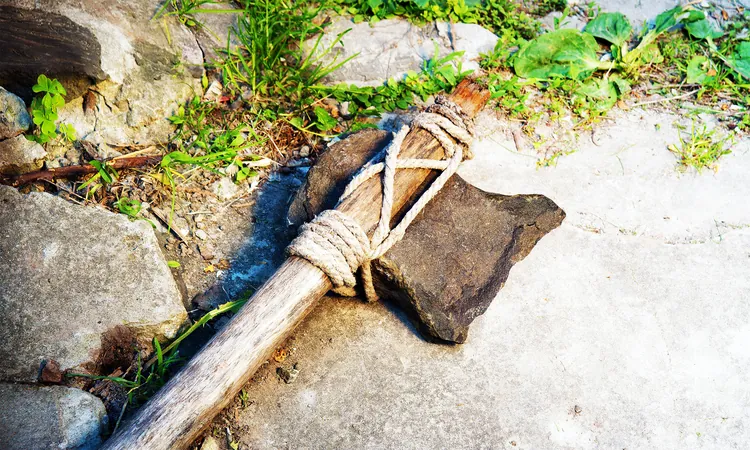
Shocking Discovery: How Stone Tools Redefine Our Understanding of Early Human Intelligence!
2024-12-06
Author: Ming
Shocking Discovery: How Stone Tools Redefine Our Understanding of Early Human Intelligence!
Recent archaeological findings are reshaping our perception of early human intelligence and decision-making. Imagine our prehistoric ancestors roaming the rugged landscapes of southern Jordan, meticulously evaluating stones before forging essential tools for survival. This level of discernment suggests that early humans possessed remarkable cognitive abilities long before the advent of modern technology.
A team of archaeologists from Nagoya University in Japan, led by researchers Eiki Suga and Seiji Kadowaki, have delved into this intriguing facet of early human behavior. Their groundbreaking study, recently published in the Journal of Paleolithic Archaeology, investigates how Homo sapiens, between 70,000 and 30,000 years ago, chose specific types of flint from the Jebel Qalkha region—a critical area during the migration of early humans from Africa into Eurasia.
As these ancestral humans ventured into unfamiliar territories, their reliance on stone tools crafted from materials such as obsidian and flint became paramount. The team aimed to uncover whether there were intentional selections of flint based on specific properties. Their hypothesis pinpointed preferences for translucent and smooth flint, suggesting that early humans were adept at recognizing optimal materials for tool-making.
Using advanced techniques, including the Schmidt Hammer and Rockwell Hardness Device, the researchers tested various rock samples, leading to unexpected revelations. While fine-grained flint was easier to shape into tools, they discovered the prevalence of medium-grained flint during the earlier Middle Paleolithic period. What prompted this seemingly counterintuitive choice? Further investigation revealed that fine-grained flint often contained internal fractures from geological activity, rendering it unsuitable for creating larger and more robust tools. Consequently, early humans opted for the tougher medium-grained variety, showcasing deliberate decision-making based on tool functionality.
"This study illustrates that Paleolithic humans modified their raw material choices according to the intended uses of their stone tools," Suga explained, highlighting a significant aspect of human adaptability. Such adaptability hints at a sophisticated cultural intelligence previously underestimated.
Why does this discovery matter? Understanding the motivations and decision-making processes behind these ancient tools sheds light on larger questions about the evolution and expansion of Homo sapiens. While genetics has outlined interactions with Neanderthals and Denisovans, examining cultural artifacts like stone tools provides critical insights into technological behaviors and environmental adaptations of our ancestors.
As archaeologists continue to unearth tools and materials from the past, each discovery paints a richer picture of human evolution, revealing the resilience and ingenuity that have characterized our species throughout history.
This shocking new evidence underscores the fact that our ancestors were not just survivors but skilled craftsmen capable of insightful decision-making—a level of intelligence that continues to shape the narrative of human development. What more will we learn about our ancient relatives as we dig deeper into the past? Stay tuned for more astonishing revelations in the field of archaeology!


 Brasil (PT)
Brasil (PT)
 Canada (EN)
Canada (EN)
 Chile (ES)
Chile (ES)
 España (ES)
España (ES)
 France (FR)
France (FR)
 Hong Kong (EN)
Hong Kong (EN)
 Italia (IT)
Italia (IT)
 日本 (JA)
日本 (JA)
 Magyarország (HU)
Magyarország (HU)
 Norge (NO)
Norge (NO)
 Polska (PL)
Polska (PL)
 Schweiz (DE)
Schweiz (DE)
 Singapore (EN)
Singapore (EN)
 Sverige (SV)
Sverige (SV)
 Suomi (FI)
Suomi (FI)
 Türkiye (TR)
Türkiye (TR)